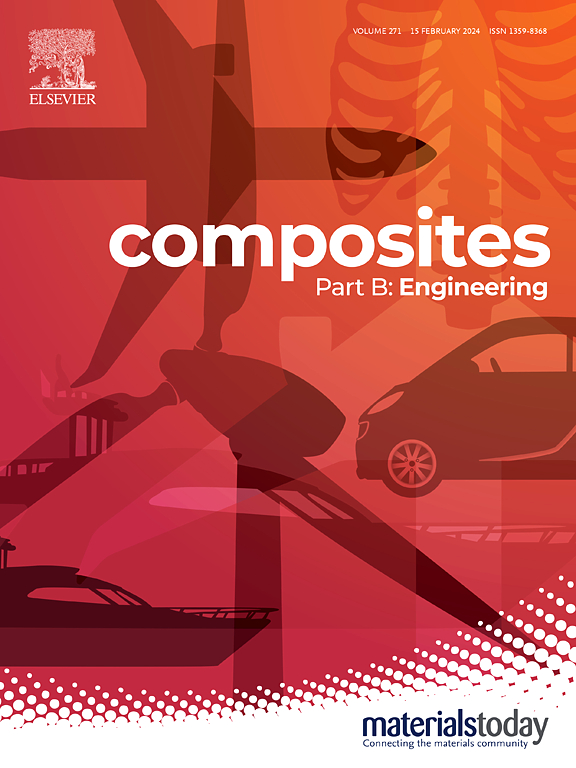Enhanced tensile properties of 3D printed soft–hard composites due to Poisson’s ratio mismatch: Experimental and numerical study
IF 12.7
1区 材料科学
Q1 ENGINEERING, MULTIDISCIPLINARY
引用次数: 0
Abstract
A novel design of soft–hard integrated composite is proposed by embedding hard lattices with controllable Poisson’s ratio (PR) at large deformation into the soft matrix. Extensive numerical simulations of the hard lattices with controllable PR (HLCPR) and the designed hard lattice reinforced soft matrix (HLRSM) are conducted based on constitutive parameters of the soft and hard materials obtained from standard material tests. PolyJet 3D printing technique is employed to fabricate the studied HLCPR and HLRSM samples with lattice of PR from -0.8 to 0.8, and tensile tests were conducted with the help of DIC method to obtain their mechanical properties and capture the fracture behaviors. Numerical results agree well with the test results in terms of effective Young’s modulus, strength and fracture behaviors. Results show that coupling between the soft matrix and the HLCPR due to deformation mismatch leads to significant enhancement of mechanical properties, and such coupling effect varies with the PR of the HLCPR. The HLCPR of PR -0.8 leads to the strongest coupling effect, while that of PR 0.4 exhibits the weakest. The soft matrix delays fracture initiation in the HLCPR and transforms the fracture mode from sudden rupture to a progressive failure. Results also demonstrate that HLRSM with HLCPR of -0.8 exhibits superior performance compared to that with an uncontrollable PR or breaking hard lattices. A theoretical model was also carried out to further interpret the deformation mismatch induced coupling effect. This study offers helpful guidance for developing high-performance composite materials and structures.
求助全文
约1分钟内获得全文
求助全文
来源期刊

Composites Part B: Engineering
工程技术-材料科学:复合
CiteScore
24.40
自引率
11.50%
发文量
784
审稿时长
21 days
期刊介绍:
Composites Part B: Engineering is a journal that publishes impactful research of high quality on composite materials. This research is supported by fundamental mechanics and materials science and engineering approaches. The targeted research can cover a wide range of length scales, ranging from nano to micro and meso, and even to the full product and structure level. The journal specifically focuses on engineering applications that involve high performance composites. These applications can range from low volume and high cost to high volume and low cost composite development.
The main goal of the journal is to provide a platform for the prompt publication of original and high quality research. The emphasis is on design, development, modeling, validation, and manufacturing of engineering details and concepts. The journal welcomes both basic research papers and proposals for review articles. Authors are encouraged to address challenges across various application areas. These areas include, but are not limited to, aerospace, automotive, and other surface transportation. The journal also covers energy-related applications, with a focus on renewable energy. Other application areas include infrastructure, off-shore and maritime projects, health care technology, and recreational products.
 求助内容:
求助内容: 应助结果提醒方式:
应助结果提醒方式:


